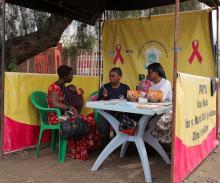
There are many different programs and organizations that address gender inequalities, or gender-related health and development issues. In many cases, evidence is lacking to assess which programs are effective in reaching their goals and serving the intended populations. Integrating gender into monitoring and evaluation (M&E) is an important step towards understanding the effectiveness of these programs and health outcomes for women and girls and for men and boys.
This course has been developed for program managers working on gender-focused programs, gender advisors, and individuals working in gender affairs, ministries of gender, or other government departments focusing on gender who seek to strengthen their understanding of M&E. It is also applicable to M&E officers who seek to integrate a gender perspective into their M&E efforts.
Suggested prerequisite: If you are new to M&E, the course authors recommend that you take the M&E Fundamentals course for more information on basic M&E concepts and definitions.
Objective
By the end of this course, learners will be able to:
- Define what gender M&E is and why it is important to health and gender programming.
- Describe how gender can be integrated into health program M&E.
- Explain the difference between sex-disaggregated indicators and gender-sensitive indicators.
- Provide examples of gender considerations in data collection, data interpretation, and data use.
- Identify specific tools and resources to further support gender M&E.
Credits
The course authors are very grateful to the reviewers who provided their insights and suggestions:
- Peggy D'Adamo, USAID
- Ana Djapovic Scholl, USAID
- Jessica Fehringer, UNC CPC
- Joan Kraft, USAID
- Kristen Wares, USAID
A special thanks to Susannah Zietz for her assistance and thoughtful review of the final course content.
Time
- 2 hours
Published/Updated
- Monday, August 11, 2014
Course Authors:
Abby Cannon, UNC CPC
Shelah Bloom, UNC CPC
Course Managers:
- Lisa Mwaikambo, CCP
